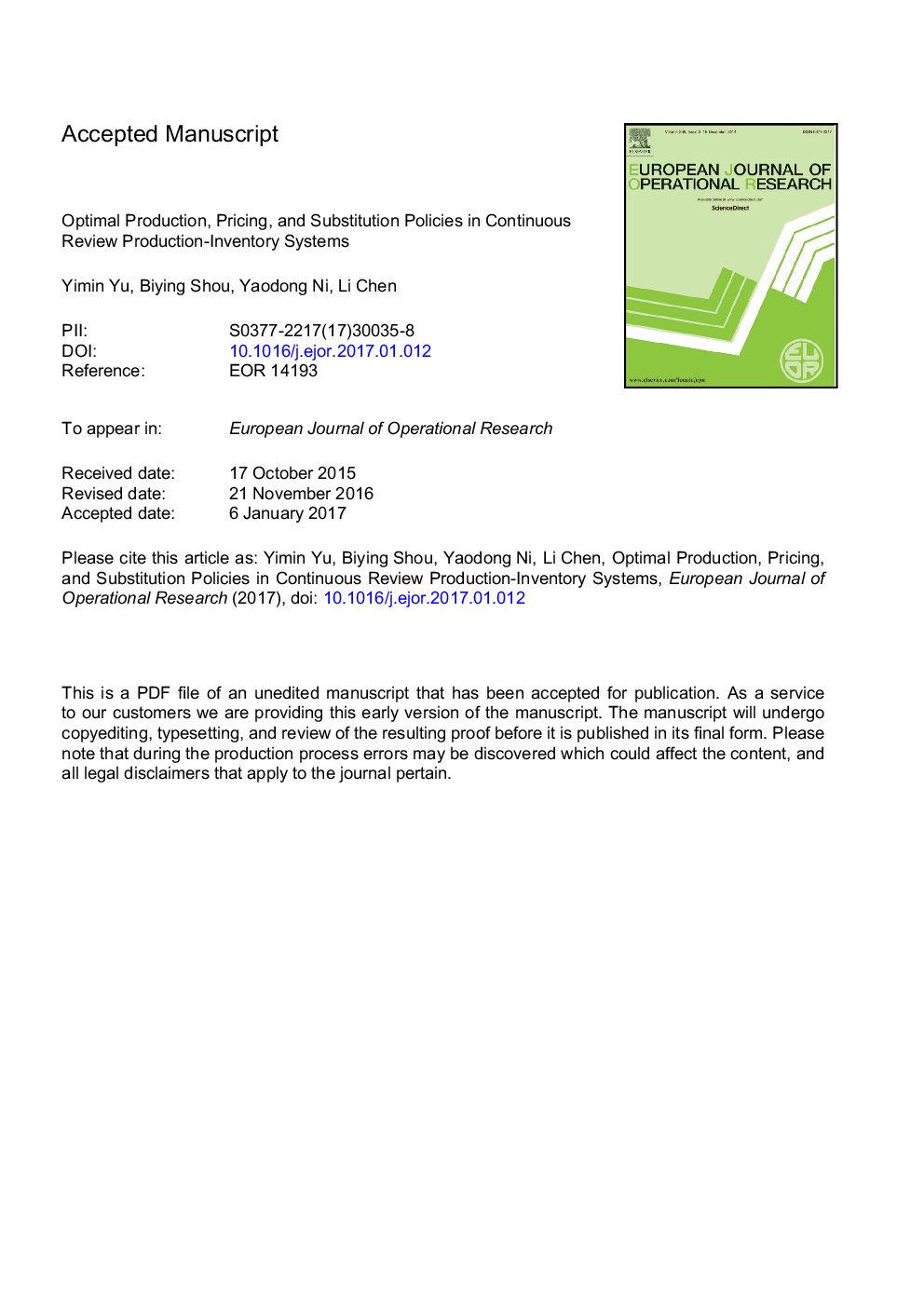| Article ID | Journal | Published Year | Pages | File Type |
|---|---|---|---|---|
| 4959855 | European Journal of Operational Research | 2017 | 51 Pages |
Abstract
We consider the optimal production, pricing, and substitution policies of a continuous-review production-inventory system with two products: a high-end product and a low-end product. Each product has its associated customer stream; however, the demands for the low-end product may be satisfied by the high-end product. We formulate the problem as a Markov decision process and characterize the structure of the optimal control policy, which specifies when to produce for each product, when to use the high-end product as a substitute, and how to set the optimal prices. We show that a base-stock production policy is optimal; however, the optimal base-stock level for each product depends on the inventory level of the other product and it features a monotonic property. We also demonstrate that the optimal substitution policy is a rationing policy with the rationing level depending on the total inventory amount. We find that the optimal prices can be either decreasing or increasing in the inventory levels, depending on the forms of demand functions. Furthermore, we utilize numerical experiments to investigate the impact of different system characteristics on the benefits of using substitution and dynamic pricing. Finally, we investigate when the dynamic pricing strategy and the substitution strategy are complements or substitutes.
Related Topics
Physical Sciences and Engineering
Computer Science
Computer Science (General)
Authors
Yimin Yu, Biying Shou, Yaodong Ni, Li Chen,
